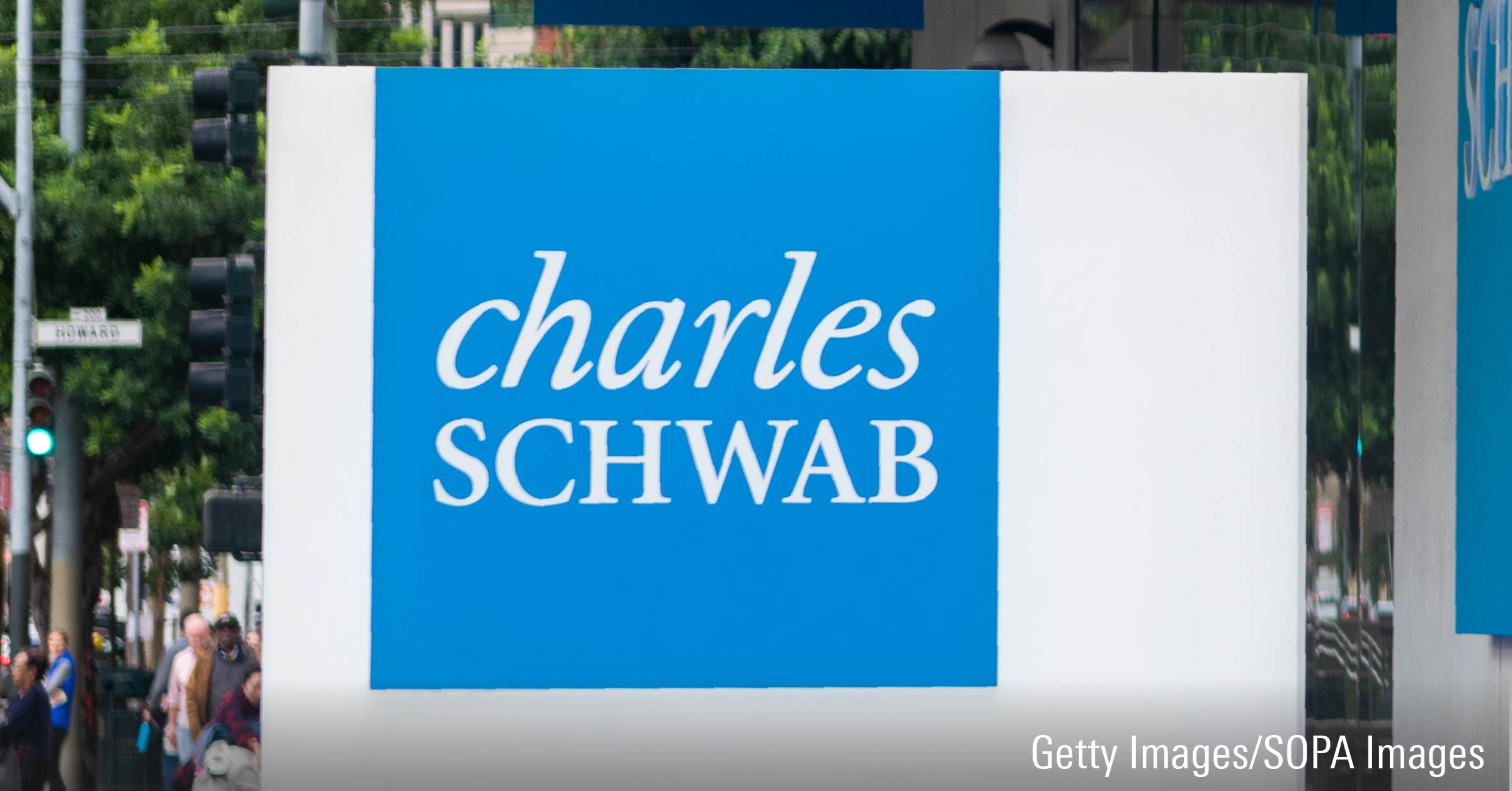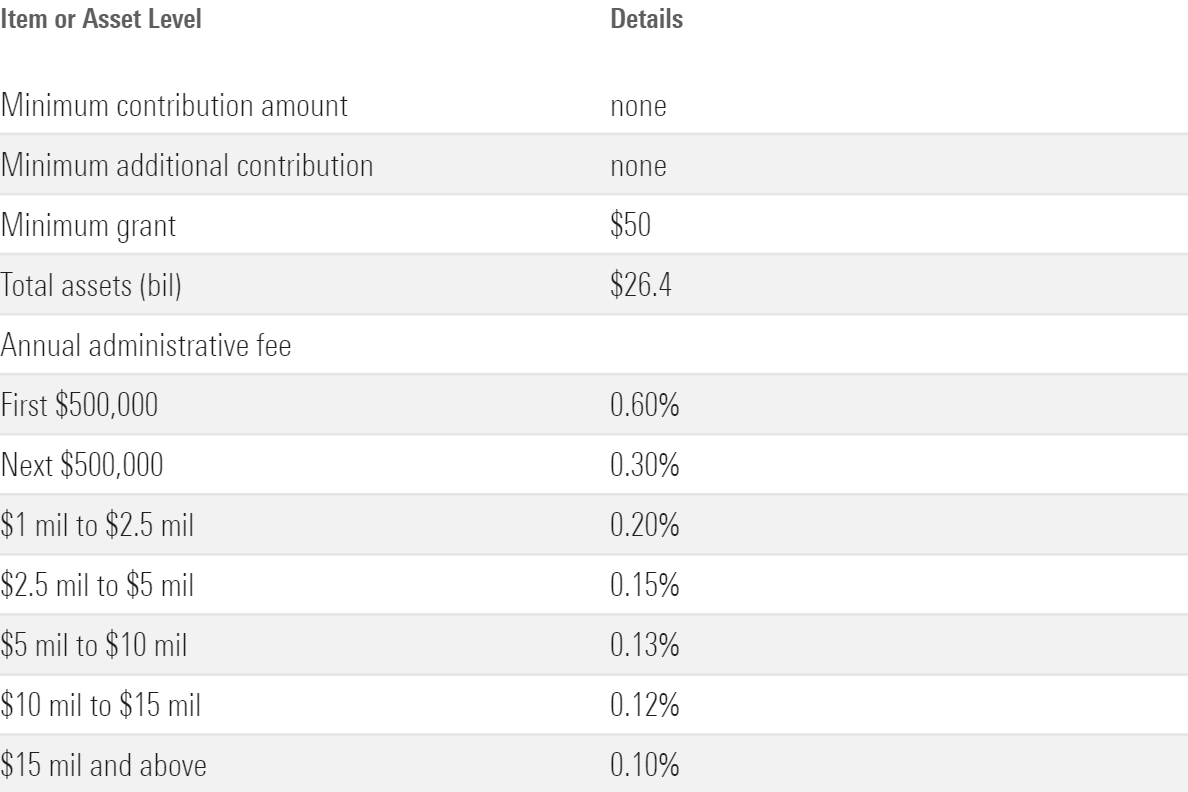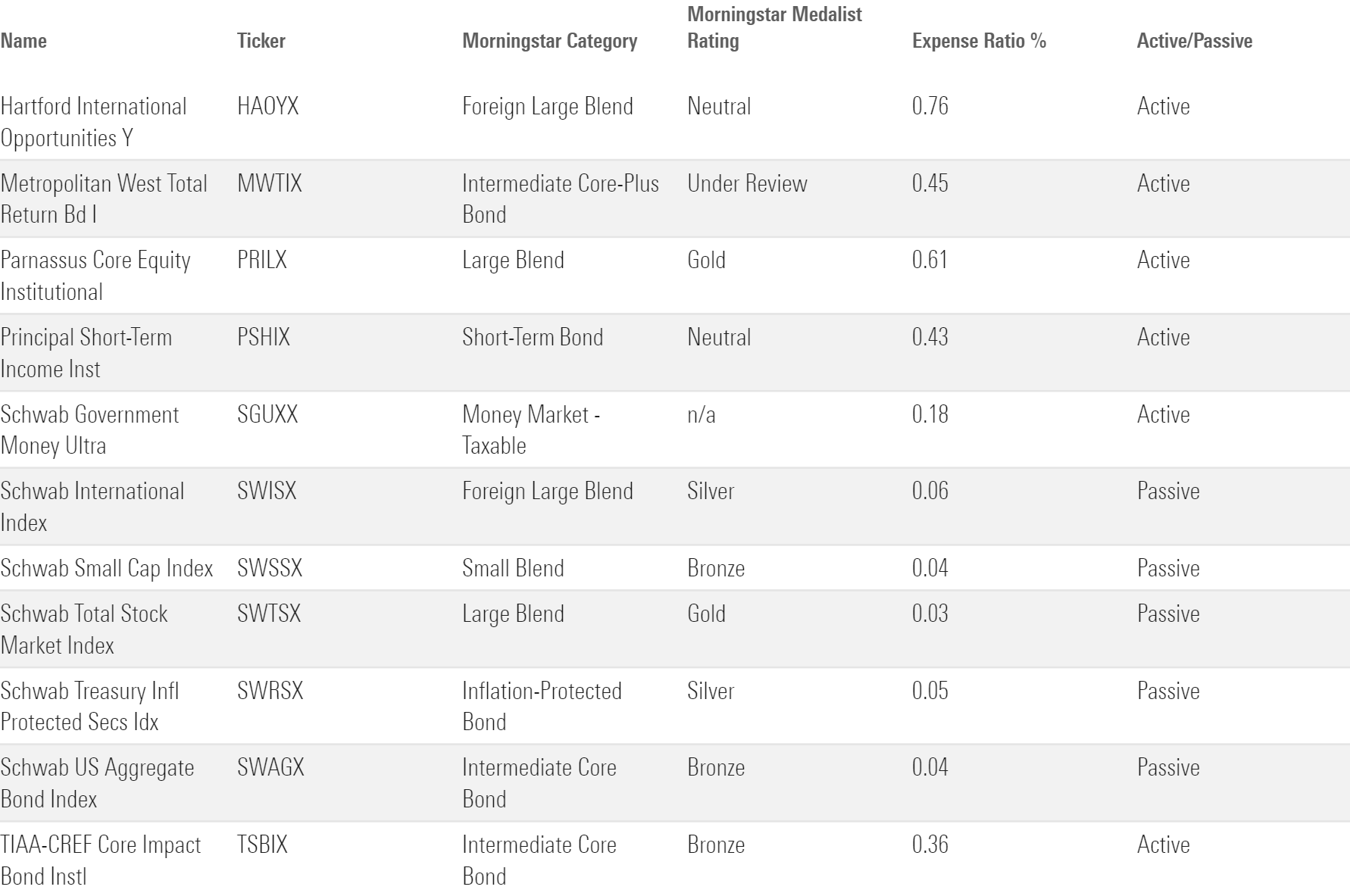How Schwab Charitable Fund Stacks Up
We unpack the fees and investment choices of America’s second-largest donor-advised fund.

With $26.4 billion in assets as of June 30, 2022, Schwab Charitable Fund ranks as the second-largest donor-advised fund affiliated with an asset-management firm in the United States. (It’s a distant second to Fidelity Investments Charitable Gift Fund, though, which had $48.3 billion in assets as of the same date.)
As I covered in my previous article, donor-advised funds have several advantages. Donor-advised funds are public charities that qualify as Section 501(c)(3) organizations. That means donors can benefit from an immediate tax deduction when they contribute cash or other assets to the fund. Although contributions are irrevocable (meaning you can’t withdraw donations if you change your mind or need extra cash), the donor retains an advisory role and can recommend how to invest the assets and how much to contribute to various charities over time.
In this article, I’ll dig into how Schwab Charitable stacks up in terms of its underlying investment options, as well as the administrative fees and account minimums.
Nuts and Bolts
Like Fidelity Investments Charitable Gift Fund, Schwab Charitable doesn’t currently require a minimum contribution amount to set up a new account or to make additional contributions. Donors can recommend grants in any amount of at least $50.
Like nearly all donor-advised funds, Schwab Charitable also comes with an additional layer of administrative costs. The fund charges a 0.60% annual administrative fee for accounts with balances up to $500,000. Accounts with balances greater than $500,000 are subject to lower fees in percentage terms, as shown in the table below.
Fees and Investment Minimums

For accounts with assets of $1 million or less, Schwab Charitable’s fee structure is identical to those of the Fidelity and Vanguard donor-advised funds, but fees for the three programs vary at higher asset levels. Vanguard charges a tiered fee of just 12 basis points for asset levels between $1 million and $5 million, and the fee steps down to just 10 basis points for account values between $5 million and $15 million. For accounts with asset values of $5 million or more, Fidelity charges a flat fee that applies to the entire account balance instead of a tiered fee structure that applies different fees to different portions of the asset total. This makes Fidelity Charitable slightly cheaper compared with Schwab Charitable for accounts between $5 million and $20 million, though Schwab’s fees are slightly lower than Fidelity’s at higher asset levels.
These charges are in addition to the fees on the underlying investments (such as operating expenses for mutual funds and exchange-traded funds, or trading commissions for individual stocks and bonds). All of these fees come out of the amount donated, making donor-advised funds less cost-efficient than donating directly to a charity.
Investment Options
Schwab Charitable offers two main investment types: diversified asset-allocation pools with a range of risk levels and single-asset pools for a variety of asset classes. Both include sustainable investment options for investors who want to consider social and environmental factors.
As a whole, the fund’s underlying investment options have an average Morningstar Medalist Rating of Bronze and an average expense ratio of 0.30%. The average Medalist Rating for Schwab’s underlying funds is slightly lower compared with Vanguard’s lineup and fractionally lower compared with Fidelity’s but still solid overall. The 0.30% average expense ratio for the underlying funds is lower than the average for Fidelity (0.39%) but higher than Vanguard (0.14%).
Asset-Allocation Pools
The asset-allocation pools offer a diversified mix of equities and fixed-income securities, with risk levels ranging from conservative to more aggressive. The lineup contains fewer funds than those offered by Fidelity and Vanguard, with target equity allocations ranging from 30% to 85% of assets. As a result, investors looking for a lower equity allocation will likely have to supplement one of these offerings with a single-asset pool, such as the money market pool or the short-term bond pool. On the asset-allocation side, all four underlying funds are actively managed. Three of the four offerings earn Morningstar Medalist Ratings of Neutral, but T. Rowe Price Spectrum Moderate Growth Allocation TGIPX stands out with a Gold rating.
Diversified Asset-Allocation Pools

Single-Asset-Class Options
For investors who prefer to build their own portfolios, Schwab Charitable offers a variety of both active and passive vehicles covering domestic stocks, international stocks, bonds, and cash. The single-asset-class menu is relatively strong overall and includes standouts such as Parnassus Core Equity PRILX, which Morningstar senior analyst Stephen Welch considers to be a topnotch offering within the large-blend Morningstar Category, and Schwab Total Stock Market Index SWTSX, which offers broad equity market exposure at a rock-bottom expense ratio. The lineup also includes several bond funds from mainstream categories such as short-term bond, intermediate core bond, and inflation-protected bond.
Single-Asset-Class Options

Other Investment Options
Like Fidelity, Schwab Charitable allows donors with balances of at least $100,000 to recommend a qualified investment advisor to manage their investment accounts. The investment advisor can build customized portfolios using mutual funds, ETFs, stocks, bonds, and certificates of deposit, as well as approved investments in hedge funds, venture capital, and private equity.
Conclusion
Schwab Charitable offers a decent lineup of investment options and is broadly accessible to a wide range of charitable donors. While its asset-allocation pools mostly receive Neutral ratings, the single-fund pools are more compelling, especially given the prevalence of good, low-cost index options. In addition, investors who already hold assets at Schwab will likely find it easier to set up a donor-advised fund under the same umbrella instead of moving assets to another organization.
A version of this article was previously published on Jan. 23, 2023.
5 Money Mistakes to Avoid in 2023’s Fourth Quarter
The author or authors do not own shares in any securities mentioned in this article. Find out about Morningstar’s editorial policies.

/s3.amazonaws.com/arc-authors/morningstar/360a595b-3706-41f3-862d-b9d4d069160e.jpg)
/cloudfront-us-east-1.images.arcpublishing.com/morningstar/ES7BXTSJ6N4RT5GG2X7PQAHRLI.png)
/cloudfront-us-east-1.images.arcpublishing.com/morningstar/O26WRUD25T72CBHU6ONJ676P24.png)
/cloudfront-us-east-1.images.arcpublishing.com/morningstar/WDFTRL6URNGHXPS3HJKPTTEHHU.png)
:quality(80)/s3.amazonaws.com/arc-authors/morningstar/360a595b-3706-41f3-862d-b9d4d069160e.jpg)